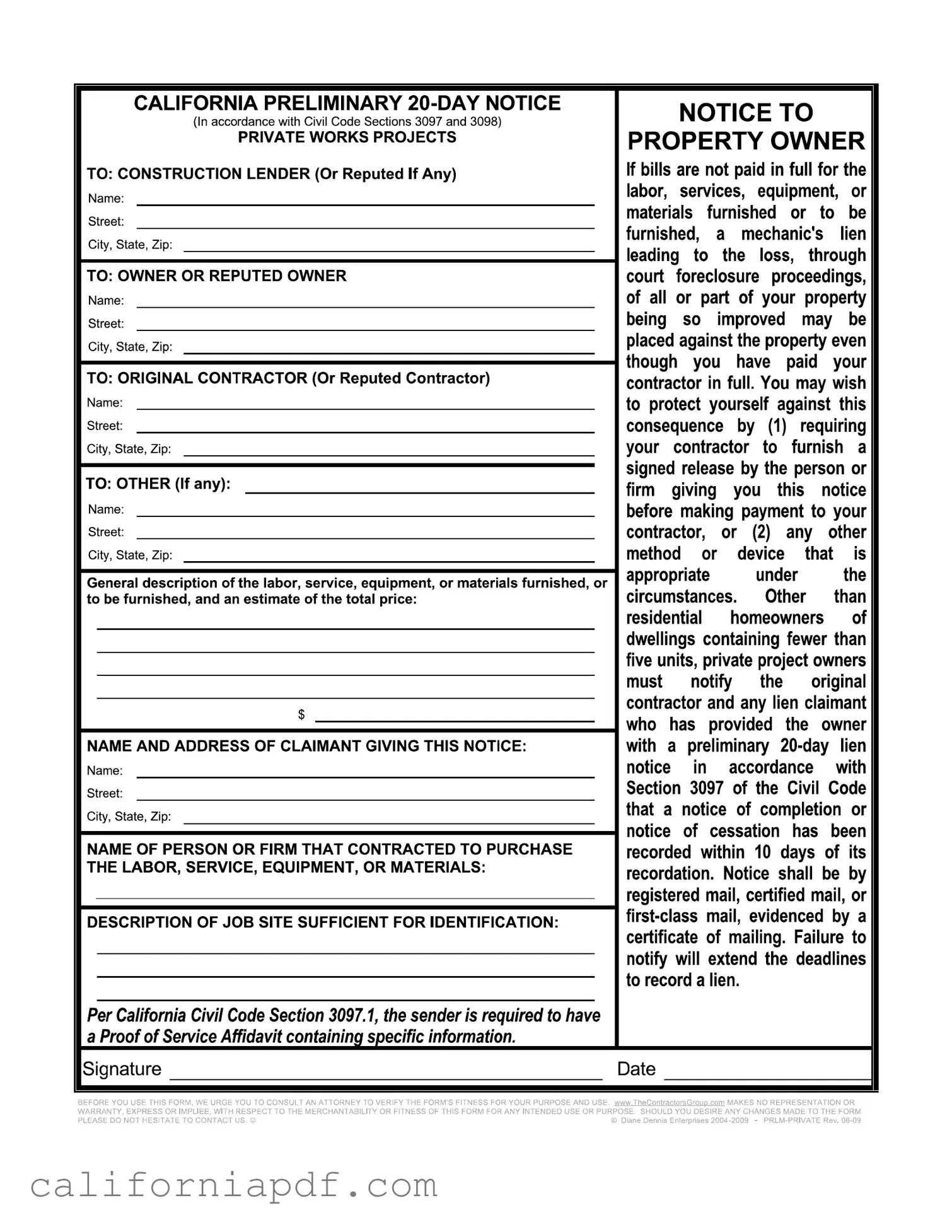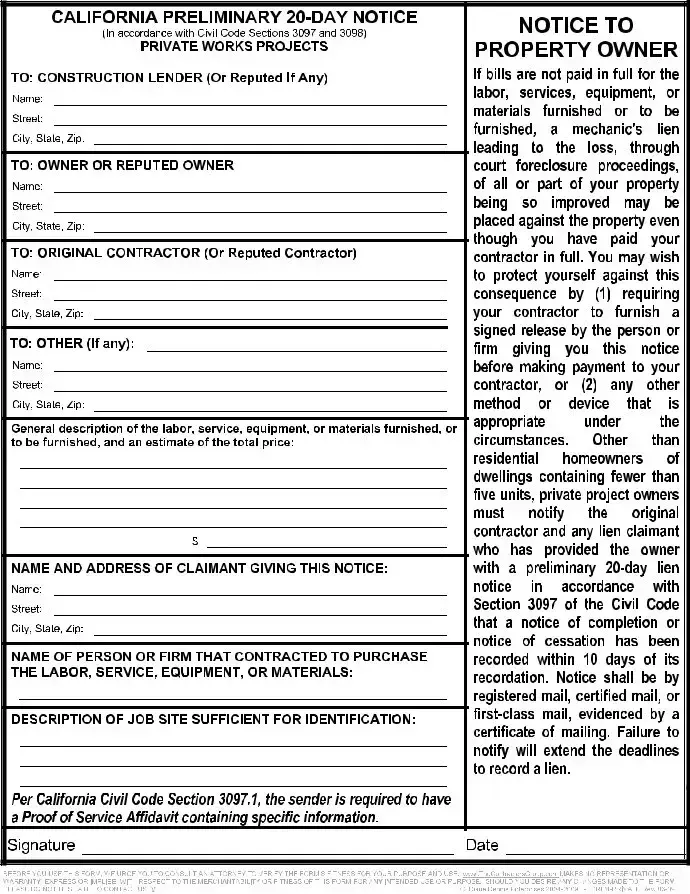The 20 Day Notice in California serves a specific function in real estate dealings, particularly in pre-lien situations. It bears resemblance to the Preliminary Notice, which contractors and suppliers use to inform property owners, general contractors, and lenders of their involvement in a project. This notice is a precondition in many states, including California, for maintaining a right to file a mechanic's lien. Both documents are precautionary measures designed to ensure parties are aware of claims or potential claims against the property.
Another document with similarities to the 20 Day Notice is the Notice to Owner (NTO) commonly used in states like Florida. The NTO, much like the 20 Day Notice, is a legal document sent by subcontractors and material suppliers to property owners to inform them of their rights to file a lien on the property if they are not paid for services or materials provided. These documents are pivotal in lien law as they protect suppliers and subcontractors' rights while also informing the property owner of potential obligations.
The Intent to Lien letter is also akin to the 20 Day Notice. This document serves as a warning to property owners that a lien will be placed on their property if payment is not made for services rendered or materials supplied. While the Intent to Lien letter can be sent at any time before filing a lien, the 20 Day Notice has a specific timeline. Both documents are crucial steps in the process of securing lien rights and ensuring payment for involved parties.
The Mechanic's Lien itself shares similar goals with the 20 Day Notice, although it comes later in the process. While the 20 Day Notice is a preliminary step, alerting parties of one's involvement and potential claim, the Mechanic's Lien is the realization of that claim, filed when payment has not been received. Both documents are integral to the mechanic's lien process, serving roles that secure the rights and interests of contractors, laborers, and suppliers.
The Stop Payment Notice is another related document which, like the 20 Day Notice, is used in California construction projects. It is a notification to a lender or financier to withhold funds due to unpaid labor or materials, adding a layer of security for those who have provided work or supplies without receiving payment. Although serving different functions, both the Stop Payment Notice and the 20 Day Notice are part of the safeguards in construction payment disputes.
Payment Bond Claims serve a similar purpose to the 20 Day Notice by providing a way for subcontractors and suppliers to ensure payment on public projects or private projects where a payment bond is in place. While the 20 Day Notice is a preliminary measure, a Payment Bond Claim is a direct action to seek payment under the bond terms, yet both are critical for those in the construction industry to secure their rights and remedies for payment.
The Notice of Completion is another document related to the 20 Day Notice, primarily due to its role in the mechanic's lien process. Filed by a property owner when a construction project is finished, it shortens the timeframe for contractors and suppliers to file a mechanic's lien. Although it functions differently from the 20 Day Notice, it plays a significant role in defining the timeline for asserting lien rights, affecting all parties involved in the construction project.
The Demand Letter for Payment, while not exclusive to the construction industry, is related to the 20 Day If a party has failed to make payment. Notice by its nature as a preliminary action to more formal legal proceedings. This letter formally requests payment for debts owed and can serve as a precursor to filing a lien or initiating a lawsuit. Both documents are used to address and resolve payment disputes before escalating to litigation.
Conditional Waiver and Release upon Progress Payment documents are closely linked with the 20 Day Notice, as both are part of the payment process in construction projects. While the 20 Day Notice protects the right to file a lien, the Conditional Waiver and Release indicate that partial payments have been received and certain rights are being waived contingent upon receiving further payment. They work together to facilitate clear communication and resolution of payment issues.
The Unconditional Waiver and Release upon Final Payment document also parallels the 20 Day Notice, but it represents the conclusion of a transaction where the 20 Day Notice is the beginning. This waiver is provided when the final payment on a project is made, signaling that no further claims can be made against the property by the signer. While serving opposite ends of the construction payment cycle, both documents are essential for clarifying and finalizing payment statuses.
In sum, the 20 Day Notice in California is pivotal within the construction sector, akin to several other documents that serve to either secure or release the rights of parties involved. Each document, while unique in its purpose and application, is interconnected through the overarching theme of managing and resolving payment issues in the realm of construction and property development.

